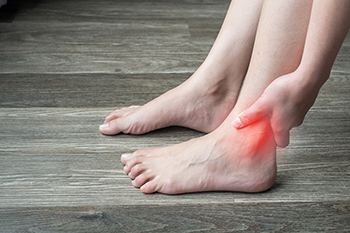Flint Office
1303 S. Linden Rd., Suite D
Flint, MI 48532

Ankle pain, a common complaint that can significantly impact mobility and daily activities, encompasses a spectrum of conditions and origins. It refers to discomfort or soreness experienced in the ankle joint, which connects the leg and the foot. Ankle pain can stem from various factors, including acute injuries such as sprains or fractures resulting from sudden twists or impacts. Chronic conditions such as arthritis, which cause inflammation and deterioration of the joint, can also lead to persistent ankle discomfort. Overuse injuries from repetitive activities, improper footwear, or inadequate warm-up routines may strain the muscles, tendons, and ligaments surrounding the ankle, contributing to pain and stiffness. Additionally, anatomical abnormalities or structural issues in the foot or lower leg can predispose individuals to ankle pain. Understanding the various reasons for ankle pain empowers individuals to seek appropriate diagnosis and treatment from a podiatrist. If you have ankle pain, it is suggested that you visit this type of doctor who can offer you the correct treatment options.
Ankle pain can be caused by a number of problems and may be potentially serious. If you have ankle pain, consult with one of our podiatrists from Community Podiatry Group. Our doctors will assess your condition and provide you with quality foot and ankle treatment.
Ankle pain is any condition that causes pain in the ankle. Due to the fact that the ankle consists of tendons, muscles, bones, and ligaments, ankle pain can come from a number of different conditions.
Causes
The most common causes of ankle pain include:
Symptoms
Symptoms of ankle injury vary based upon the condition. Pain may include general pain and discomfort, swelling, aching, redness, bruising, burning or stabbing sensations, and/or loss of sensation.
Diagnosis
Due to the wide variety of potential causes of ankle pain, podiatrists will utilize a number of different methods to properly diagnose ankle pain. This can include asking for personal and family medical histories and of any recent injuries. Further diagnosis may include sensation tests, a physical examination, and potentially x-rays or other imaging tests.
Treatment
Just as the range of causes varies widely, so do treatments. Some more common treatments are rest, ice packs, keeping pressure off the foot, orthotics and braces, medication for inflammation and pain, and surgery.
If you have any questions, please feel free to contact our office located in Flint, MI . We offer the newest diagnostic and treatment technologies for all your foot care needs.